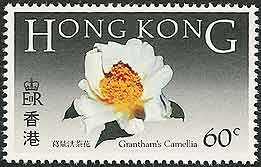The black-faced spoonbill (Platalea minor) has the most restricted distribution of all spoonbills, and it is the only one regarded as endangered. There remain only about 3,300 spoonbills, and the species spends the mating season on small islands along the west coast of the Korean Peninsula and in China’s Liaoning province, the WWF says. “With such a small global population, the black-faced spoonbill is inherently vulnerable to extinction,” it says.
The Hong Kong grouper (Epinephelus akaara) is vulnerable in part because it takes a relatively long time to reach maturity, so is more prone to overfishing than other species. The dire state of stocks and persistent overfishing may mean it faces extinction in the wild. For now, the spiny, blotchy species retains a grip in shallow coral communities and rocky reefs.
The mules-foot fern (Angiopteris evecta) has been around since dinosaurs walked the Earth. Also called the “king fern” and “oriental vessel fern”, the plant can grow taller than a man, with fronds that can stretch to eight metres long. WWF Hong Kong says the mules-foot – one of the world’s largest ferns – also goes by the nickname Plantasaurus. Locally the fern has holdouts on Hong Kong Island and Tai Mo Shan in the New Territories. It can also be found across China – in Guangdong, Guangxi, Guizhou, Hunan, Hubei and Fujian provinces, the herbarium says.
Another endangered plant, Grantham’s camellia (Camellia granthamiana) can reach a height of eight metres. The ornamental plant, with giant white flowers measuring more than 12 centimetres in diameter, was first discovered in Hong Kong in a ravine on Tai Mo Shan by the Agriculture, Fisheries and Conservation Department in 1955. Grantham’s camellia was named in honour of the then governor of Hong Kong, Sir Alexander Grantham. Classified as vulnerable, its population has been estimated at 3,000 mature plants sparsely distributed in the mountains. The plant’s future is threatened by illegal collection and land clearance. Attempts are being made to conserve and cultivate the plant, and examples of Grantham’s camellia can be seen growing at the Shing Mun Arboretum.

- Login om te reageren
